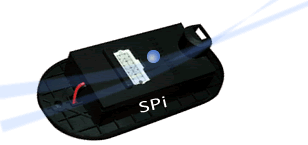Safe Air Start Here!
Help wildfire smoke evacuation
Wildfire Smoker’s Biggest Health Concern
Fine Particulate Matter – PM 2.5
Wildfires produce a range of harmful air pollutants, from cancer-causing
substances to tiny particles that can aggravate existing health problems
and increase the risk of heart attack or stroke. Particulate matter (PM) is the main pollutant of concern from wildfire smoke for relatively short-term exposures (hours to weeks). Particles from smoke can be very small (with diameters of 2.5 micrometers and smaller).


They are small enough to get deep into the lungs and the tiniest, ultrafine particles can pass directly into the bloodstream. The association between PM2.5 and heart and lung health effects is well documented in scientific literature. <Data Source: CARB (California Air Resource Board)
California Air Resource Board’s wildfire smoke evacuation guidelines:
“Stay inside your vehicle with windows and doors closed. Run the air conditioning with Recirculate turned on.
Wear an N95 mask in your vehicle and at shelters. For those with asthma or respiratory conditions, bring inhalers and medication."
Does the recirculate button in your car help reduce wildfire smoke?
The recirculation button takes in air from inside the car and recirculates it into the cabin instead of taking in outside air. This helps prevent wildfire smoke from entering your car. However, there are some issues doing this.
#1. Vehicles equipped with a cabin filter in the engine compartment are designed to filter only outside air.
So, the recirculated air flows back into the cabin without being filtered. In this case, the car cabin air filter has no role. More information visit www.magnbrook.com
#2. Setting the recirculation mode blocks wildfire smoke coming from outside, but since the cabin filter is located at the air intake, pollutants emitted from the air conditioner evaporator are not filtered and flow into the vehicle. Moreover, these bacteria and mold accumulate inside the vehicle until the fan is turned off or roll down window.
What can you do to solve this problem?
Installing a Cabin Air Sterilizer in your vehicle's ventilation system is the answer to solve this problem.
How can a Cabin Air Sterilizer help with wildfire smoke evacuation?
PM2.5 is a major pollutant of concern from wildfire smoke, as it is small enough to travel deep into the lungs and even the smallest ultrafine particles can pass directly into the bloodstream. The tiny particulate hazard of smoke known as PM2.5 requires a very high grade of filter. On the one hand, High-efficiency particulate air (HEPA) filters have a filtration capacity of up to 0.3 microns, but PM2.5 sizes range from 2.5 to 0.1 microns, so cabin filters on their own are not efficient enough to remove wildfire smoke.
Cabin Air Sterilizer has excellent ability to eliminates smaller 0.1 microns in diameter such as PM2.5, UFP (Ultra Fine Particle) and viruses. This reactive ions are continuously released into the vehicle interior to continuously remove wildfire smoke and pollutants from the interior, lowering the vehicle's exposure to wildfire smoke. Cabin Air Sterilizers are the most needed wildfire smoke evacuation aid.

Continuously released reactive ions continuously remove wildfire smoke inside the vehicle, helping a wildfire smoke evcacuation.
SPi has excellent ability to remove PM2.5 and UFP (smaller than 0.1 micron). Continuing to remove smoke from the interior of your vehicle also improves driving visibility. Watch the below smoke test demo.
Cigarette smoke removal test
Since we can't easily see harmful airborne pollutants including viruses, fine particle known as PM2.5, bacteria. We constructed a simple test-up using a very common harmful air contaminants: cigarette smoke. We filled a small plastic box with the SPi device installed with cigarette smoke. When you turn it on, the smoke disappears within 2 minutes. There is no fan inside and it is sealed.